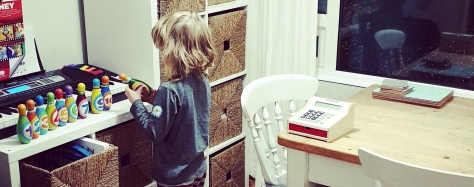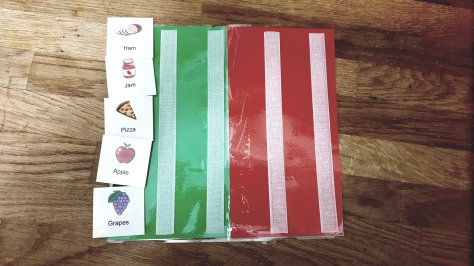When everyone’s children are conversing and talking in sentences, it is extremely disheartening to watch your child sit silent and not utter a sound.
I have been in the situation of my son not talking. Not saying his first word until he was four, a developmental milestone that other children make at around a year old. In our case, my son’s delayed speech was linked to autism. But there are many other reasons for a child not developing speech, and it is best to discuss with the professionals; your health visitor or GP to ensure you get the support your child needs.
However, while you are waiting for answers, there are some things that you can do to start the journey towards communicating with your child.
1. Mimicking
As much as you may want to play a certain game or toy with your child, they may not want to do the same. Similarly, they may not want to play it according to the instructions or the rules as they are printed on the box.
You need to change your outlook on this. Remember that you are finding a way to engage with your child and prompt interest with them. You need to play with what they want, in the way that they play it.
If your child is not interested in toys and prefers jumping around, or spinning, or singing, you need to join them in this game.

Copy what your child does, jump with them, mimic pushing the wheels of a car alongside them, or hide under the blanket with them.
This copying of your child’s actions, will firstly create a sense of interest. They will see you doing something they enjoy and feel a connection to the action, creating engagement.
2. Move Everything Up High
If your child is bringing you items to open or helping themselves to toys they want to play with, they will continue to do this without words or a request. They will not see the need to engage with you to get what they want, therefore not needing to prompt communication or future verbal requests.
So take the key items and move them out of their reach. You will start to feel like your nan who has strange items in strange places, like the rice cakes next to your dinner plates, and a line of cars on the top shelf of the bookcase.
The objective is to get your child to point and request an item. If they are dragging you by the hand, let them lead you to the item, this is the starting point. They now need you to get what they want, and they need to engage with you to get it.

3. Choices
After having moved everything out of your child’s reach, you should see a change in them, either pointing to the object or leading you to what they want. Most of the time you will know exactly what your child wants, and you can now use this to your advantage.
If you child has dragged you to the fridge and you instinctively know that the only thing they want out of the fridge is an apple, choose another item you know they do not want. Now provide them a choice between the Apple and the unwanted item.
You are not looking for a speech or a verbal response at this stage, just an opportunity for them to request the item. This may initially be a split second of eye contact, a point, or a verbal babble. The aim is for them to provide some sort of response before they get their reward, in this example the apple.
Over time as engagement and interaction develops, you can provide choices of two different items which they will want, and see if they can choose between them.
4. Pictures
Never underestimate the power of pictures.
The route to developing speech involves the need to initially associate a spoken word with an object, feeling or instruction. Just by constantly speaking these words, will not necessarily provide the association. This is why it is important to develop engagement before you can expect to generate understanding and eventually speech.
Print out pictures of activities and place these on the wall to allow your child a choice of things to do.
Use pictures to show the sequence of events and where you are going. This will reduce anxiety and provide a method to let your child know what is about to happen, or if they are about to go into the car or a walk to the park.
Pictures can be used in the physical form, with them being laminated and attached to sequence cards or wall charts. Alternatively there are numerous apps which allow you to store pictures digitally or allow you to immediately take photos of different objects and present them to your child on screen.
5. Makaton
Makaton is a fantastic way to enhance understanding and encourage speech. It is easy to learn with the signs being very intuitive and easy to remember.
Using makaton does not stop the development of speech, but enhances the process. It will allow your child to communicate when they have no words, reducing anxiety and frustration.
There are many YouTube sites and videos of the most commonly used signs which can allow you to get started, and if in doubt, turn on CBeebies and let Mr Tumble do the work for you.
6. Crouch Down
In every engagement with your child make sure you are at their eye level. Crouch down to give choices for their request, and allow them to see your face.
When you have the item they have requested, hold it up to the side of your face and repeat its name. Your child may not want to look at you, but holding the wanted item next to your face, will allow your child to see your facial expression and muscle movement out of the corner of their eye, linking it to the pronunciation and sound of the word.

Learning to talk is not just about verbally pronouncing the sound. The facial muscles need to develop and move in the correct way to make the appropriate sounds. The only way to learn how to move your face to produce the correct sound is by seeing others do it. Seeing the multiple facial muscles move and associate them with language, is key to learning how to talk. It is then through practising the movements and hearing the sounds, that speech can be formed.
7. Entering Their World
The world is full of metaphors, and it was something I took time to get my head around. As I mentioned above, it is extremely difficult, but don’t try to inflict your view of how things should be done, or what games and toys your child should play with onto your child.
You will progress a lot quicker and be a lot less frustrated if you use your child’s interests or ways of playing. Once you get the engagement and interaction, you can start to push the boundaries a bit, but you first need to do things their way.
Let your child choose a toy to play with, or if they are most into physical play, use this to interact. My son loves tactile play and numbers, so we would throw him up in the air while counting the number of throws. This evolved to us asking him “How Many?” and he would hold up his fingers requesting the number of throws.

We later used numbers to engage with every day objects, like counting ducks or asking how many rice cakes he wanted.
8. Pausing and Waiting
A few seconds silence can feel like a life time, but that silence can work wonders. When you are waiting for an interaction or prompt from your child, don’t feel like you need to give in after a few seconds. Take your time, sit on the floor and wait.
If you get no response, prompt once again and wait. I have had many occasions of sitting on a cold kitchen floor, asking if my son wanted an Apple or an Orange. Some of those occasions have lasted over half an hour, but I waited and I persevered.

When you eventually get that engagement, then a sound and then a word, all those hours sitting on a cold floor will have been worth it. I also suggest keeping a cushion close at hand if you foresee this as being a frequent occurrence.
9. Use Simple Language
When you are speaking to your child don’t talk in long sentences with large confusing words and multiple pieces of descriptive language. Limit your sentences to a few words, ensuring they are simple and to the point.
Always use sentences in the order of how the activities are going to occur, as this will void confusion about what is about to happen and in what order. For example instead of saying “We are going to the park, so get your shoes on”, change this to simple language with the activities in the order of occurrence, “Shoes then park”.
10. It Takes Time
You will have heard the stories of some children not talking and then talking in sentences, others take a bit longer, and some take years. You need to go through the process with your child. The initial engagement, the understanding, the physical facial development, the babbling and then eventually word formation.
It took my son years, but I never gave up. I continually worked on engagement and understanding. I used pictures and makaton to support communication, and when we got sound, we worked on each syllable of the word until he said it.
Lastly, it is important to note that communication is not only verbal. It is done through interaction, expressions, signs and gestures. We all naturally look to verbal communication as the key element for conversing, but there are a multitude of methods before you even get to the spoken word.

Before my son could talk, I wrote down all the ways he was currently communicating, these included leading me by the hand, pointing, and shouting. Over time these methods of communication increased to requests via the use of pictures, makaton signing, and verbal prompts. He was communicating before he could say his first word, and I could instinctively understand his wants, and needs.
Look to identify all the different methods of communication. Stop focusing just on the verbal, and build up all the other methods, as these will aid the communication and engagement between you and your child.
If you are looking for more details, or step by step instructions on how to implement any strategies used for communication and engagement, have a look on the strategies area on the A&Me home page.





